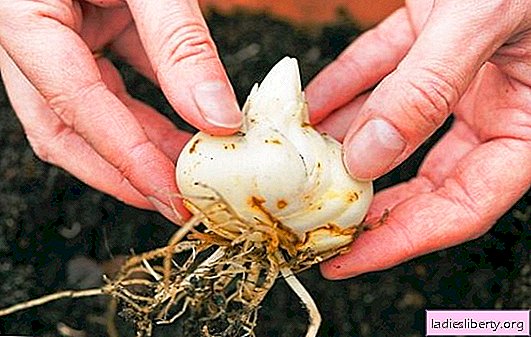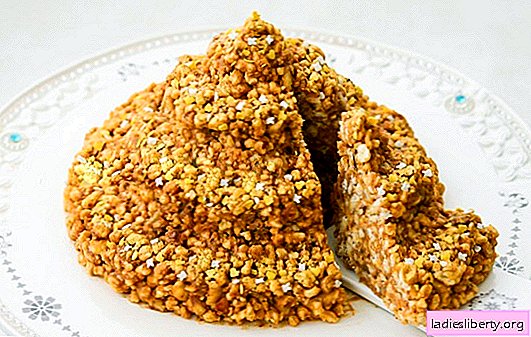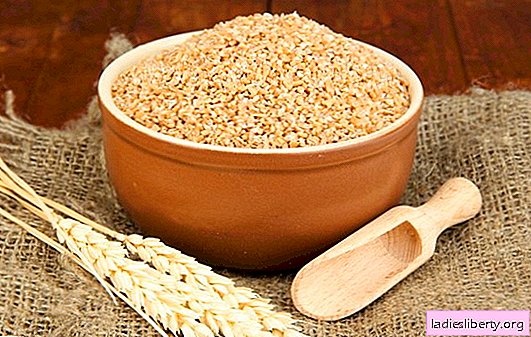
A beginner gardener can be frightened by growing lilies on the site. But in fact, this delicate and sophisticated flower is not so capricious, and with proper care it will surprise the owners and neighbors with abundant flowering. Let's talk about planting lilies in the fall in the ground, especially since many experienced flower growers consider this time to be the most advantageous.
Than planting lilies in autumn is better than in spring
Lilies can be planted both in autumn and spring. But most varieties (North American, Caucasian) are preferable to plant in the early fall - in September. Asian hybrids are available in October. If warm weather persists at this time, then the bulb has time to take root. In cold weather, planting must be covered with peat, fallen leaves or special material. Do not use hay or straw - mice will start and gnaw onions.
Bulbs planted in autumn during the fall and winter will have time to acclimatize, absorb nutrients and energy. Will be ready for spring frosts. Such lilies bloom earlier than planted in the spring and, as a rule, more abundantly.
But if the lily is acquired in the spring, then it must be planted as soon as possible. It is undesirable to wait for autumn - the quality of planting material may decline.
How to choose a bulb for planting and how to process it
This is not difficult to do, in many respects one must rely on intuition. Of course, sick and rotten bulbs are immediately discarded. It is necessary to pay attention to the roots: too long "living", as well as any lifeless is better to trim.
Outwardly healthy and strong onions are processed in a burgundy potassium permanganate solution.
If the planting material has an unhealthy appearance, is covered with orange or brown spots, then they are treated with a solution of Fundazole or Karbafos. Before soaking, it is necessary to remove or cut off all the diseased parts of the bulb, the slices are treated with charcoal.
To improve future flowering and accelerate the growth of the entire flower culture, Epin, Zircon or succinic acid can be used. In the last solution, it is better to leave the bulbs for 10 hours, in the rest of the preparations for 40 minutes. After spread the planting material on paper and dry, but not in the sun.
If there are several days before the planned planting, then it is better to place the bulbs in a cool place, sprinkled with sawdust, sand or overlaid with wet moss.
Choose a place for planting lilies in the ground
Most of the success depends on the right landing site. It is better to give preference to a site that is sufficiently lit in the morning. In bright sunshine during the whole daylight hours, the lily can burn out and grow not high enough, with the exception of the varieties: Royal, Bulbiferous, Regale, Asiatic and others.
Excessive shading (near buildings, under the crown of trees) is detrimental to culture. In this case, a skinny trunk grows with sparse leaves and a not quite developed flower.
The soil should be quite loose. And there can be no question of groundwater close to landing. The bulb can rot, and not having time to sprout.
Excess organic fertilizers (manure, chicken) can lead to abundant development of green mass to the detriment of flowering.
If there is a clay substrate on the site, then it can be diluted by adding peat, mineral fertilizers and sand to the soil in the autumn to plant lilies.
The preferred soil reaction depends on the variety of flower. Tiger, Oriental, Henry, Asiatic, David, Drooping prefer slightly acidic land. Regale, Umbrella, Bulviferous love a slightly alkaline substrate.
When choosing a place, one must take into account that the bulbs themselves cannot stand the sun. Therefore, it is better to plant lilies in the flower garden, so that undersized plants are nearby.
Depth and pattern of planting lilies in the fall in the ground
For the normal development of flowers, the distance between them should be 10-17 cm. Between the rows it is enough to leave a gap of 20 cm.
For different varieties of lilies, there are rules for the size of the hole. But the standard approximate depth of the fossa should be equal to the three sizes of the bulb itself. If we are talking about tall hybrids and lilies that produce near stem roots, then it is better to double this parameter. In any case, it is better to plant the bulb deeper than it should be, so the risk of damage from frost will decrease, and the formation of children will increase. There is a slight drawback - late flowering. Shallow planting threatens diseases and unstable position of the plant.
Lilies with rosettes of ground leaves (Catsby, snow-white or terracotta) should be placed in the hole so that the top of the scales is on the surface.
The correct and convenient scheme for planting lilies in autumn can be seen in the photo.

Step-by-step instructions for planting lilies in the fall in the ground
The sequence of actions when planting bulbs in the soil:
1. dig a small hole about 40 cm in diameter and 20-30 cm deep;
2. lay gravel or expanded clay on the bottom;
3. On the drainage, spread the soil layer 4-6 cm thick;
4. make a depression in the soil;
5. place the onion in the hole and sprinkle it with a substrate (you can use sand to protect against infections and excess moisture);
6. next to the landing, make a deepening with your finger and add granular fertilizers there;
7. Top with a rare layer of wood ash.
In hot weather with dry soil, watering is required after planting. This will help to fix the bulb in the ground and spread its roots. Wet ground is optional.
Planting lilies in the fall using sand, can be seen in the photo.

Fertilizers applied for planting lilies in the fall
Before planting, the earth is dug up, and fertilizers are applied depending on the condition of the soil:
• podzolic and poor fertilize humus at the rate of 7-9 kg per 1 square. meter;
• sand, peat and some organic matter are added to the heavy and dense;
• chernozem and leaching earth is diluted with 4 kg of humus per 1 sq. Km. meter;
In addition to organic fertilizers, phosphorus, nitrogen and potash are also added to the soil that has never been used for growing cultivated plants.
Excess organic fertilizers (compost, chicken, manure) can cause illness. To protect the planting of flowers from pests, it is good to sprinkle it with ash.
Problems of planting lilies in the ground and methods for solving them
1. A site in a lowland with a risk of stagnation of water in the spring was selected for landing.
Decision: if there is no other better place, then it is worth paying great attention to the drainage system - to make a deeper layer of expanded clay and gravel.
2. There is poor podzolic soil in which organic matter must be added, but it can lead to disease.
Decision: use only disinfected ready-made composts, such as "Athlete" or "Peaks".
3. A sunny place has been chosen without the slightest shading, and this will have a detrimental effect on the bulbs.
Decision: mulching the earth with materials of light shades (sawdust), planting next to a lily of other colors: bell, flax, peonies, daisies.
4. There is a risk and suspicion of infection of the bulbs with fusarium rot when the scales and the bottom of the bulbs rot. At the same time, the lily itself turns yellow leaves below.
Decision: soaking the bulbs with a suspension of Fundozol (0.2%) or a solution of "HOM". There is a popular way: soaking in a concentrated salt composition, after the destruction of the rotted parts of planting material.
Beginners should start their acquaintance with lilies of the Asian species. They are characterized by increased winter hardiness and are unpretentious to conditions. Tubular hybrids will need shelter. The most beautiful oriental varieties: Japanese, golden, beautiful, need special attention. Everything is important for them: soil, place, weather conditions. They do not like high humidity and raindrops on the leaves. Feel great in the greenhouses.











